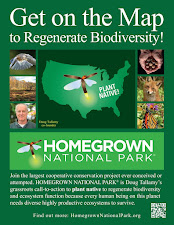ALL is defined as the entire spectrum of living species and ecosystems as well as inanimate earth resources. Within humanity, ALL refers to the various societal structures and ensuring that the worker population is treated with dignity, respect, and cared for with the necessities of food, shelter, and clothing.
Definitions
In 1893 collective consciousness was introduced as a concept by French sociologist Émile Durkheim in his The Division of Labour in Society paper. According to Nicki Lisa Cole, Ph.D. in her 2019 Collective Consciousness Definition essay for ThoughtCo., collective consciousness (sometimes collective conscience or conscious) is a fundamental sociological concept that refers to the set of shared beliefs, ideas, attitudes, and knowledge that are common to a social group or society.
The Meridian University July 2023 Understanding the Mystery of Collective Consciousness article gives a deeper dive into Durkheim's, Jung's, and Sigmund Freud's exploration of collective consciousness and collective unconsciousness.
For purposes of this article, collective consciousness is defined as an open-hearted approach to resolve challenges and create scenarios where ALL concerned are honored, treated with respect and of equal importance, and benefit from outcomes. The consciousness may encase the Earth in its entirety or a community working together on creative solutions. Additionally, the consciousness may be a family unit, organization, or company.
As previously stated, ALL is defined as the entire spectrum of living species and ecosystems as well as inanimate earth resources. ALL is the common ground in collective consciousness, no matter the extent of the consciousness definition.
The following sections give examples of how the ancient wisdom of collective consciousness is implemented within modern-day organizations.
* direct quote from The Meridian University article.
WE Consciousness
In 2012, Elemental Impact (Ei) introduced the WE Consciousness as a higher octave of the then tagline Sustainability in ACTION. When the "I" is replaced with "WE," the impact of our actions extends to the entire community and beyond; collective action accomplishes more profound results than singular effort. By working together, synergies are unlocked, unnecessary boundaries, including competitive barriers, disintegrate, and creative energies catapult possibilities into grounded realities.
The following initiatives showcase how the WE Consciousness naturally integrates within Ei's important work.
Zero Waste is a Team Sport
The 2012 Regeneration in ACTION (RiA) article, Zero Waste is a Team Sport, further defines the WE Consciousness within the context of implementing effective zero waste practices. The article details the three initial shifts necessary for zero waste to replace landfill waste:
- First, the "pay and forget" era is over; the consumer must take responsibility for the by-products generated from their activities and ensure materials are reused or recycled.
- Second, waste management is replaced by materials / by-products management. In nature there is no "waste"; it is time to emulate nature's perpetual life cycle systems.
- Third, the "I" focus is replaced with the "WE" focus. When ALL work together, seemingly miraculous results are common.
Each December from 2011 through 2014, Ei orchestrated an empowering meeting of executives from the trade associations and non-profits representing the entire food and beverage packaging value chain. For the final three years, Global Green USA graciously hosted the gathering at their Washington D.C. offices.
 |
| Group photo at final F&B Packaging meeting |
 |
| Tree grows as one with a Havana, Cuba building Photo credit: Holly Elmore Images |
- Diversity
- Dynamic Balance & Nutrition Systems
- Necessity of Cover & Ability to Roam
 |
| A gentleman sleeps on a sidewalk in Austin, TX Photo credit: Holly Elmore Images |
 |
| Honey bee on a butterfly pea blossom Photo credit: Holly Elmore Images |
In essence, water, soil, and insects are the foundation for life on Earth and must be addressed as a trilogy. The RiA article, Nature Prevails: it is time to emulate Nature's perfected systems, establishes the trilogy.
In human societies, indigenous races and worker populations are comparative to the insects' role in nature's perfected cycles. Indigenous races carry the wisdom of their ancestors when humans lived in balance with Nature, respecting the resources generously provided by the Earth; the worker population provides the necessary labor for the overall population to thrive within the balance of basic essentials: food, shelter, and clothing.
The WE Consciousness is integrated within the Nature Prevails platform as initiatives strive to restore balance and health to entire ecosystems, including manmade systems.
Crew Consciousness
In 2015 Ei Advisor Tim Rumage, planetary ethicist and the Professor of Environmental Studies at Ringling School of Art and Design, along with David Houle co-authored This Spaceship Earth. The book's premise compares the Earth to a spaceship where there are finite resources necessary for survival. To replenish resources for survival, humans must understand there is no waste, only the segue into the resource's next valuable use.
This Spaceship Earth introduces crew consciousness:
The critical difference between the spacecraft of the space programs and science fiction and Spaceship Earth is simply that: we live on a spaceship that must resupply itself from itself. This is why we need to recognize that we are crew not passengers.
When humans shift from the unaware passenger mentality to crew consciousness, the current wasteful-use-of-resources and polluting-the-planet practices will evolve into solutions for replenishing finite resources and cleansing the environment.
In alignment with the Nature Prevails premise, Tim emphasizes "We are not trying to save the earth - we are not trying to save the planet. We are trying to save ourselves from ourselves"
The popularity of the book spawned the launch of This Spaceship Earth, Inc. (TSE) a global environmental non-profit with Origina, the global leader in IBM software maintenance, as the lead corporate supporter.
Inspired by a "I did not know," common response to his presentations, Tim along with David and Bob Leonard published a free e-book, Now that You Know, that updates on the Earth's status, how we arrived at the current crisis point, and what we can do about it.With a goal of one billion crew members, the TSE site boasts over 140,000 crew members from across the globe. On the Acting as Crew page, TSE provides the following guidelines on how to live within crew consciousness:
- We all need to lessen our carbon footprint. Greenhouse gas emissions are a primary cause of Climate Change.
- We all need to consume less stuff. Mindless consumption puts stress on TSE.
- We need to move from a Growth Economy to a Spaceship Economy. Be mindful of what you buy, how it’s produced, and any waste that will remain after the product is used.
- Lower your entire footprint on TSE. Less is more.
Additionally, TSE details specific individual-action points within the following categories: transportation, food & diet, shopping, reduce plastics, home, and politics and activism.
A quote from Marshall McLuhan succinctly states TSE's message:
"THERE ARE NO PASSENGERS ON SPACESHIP EARTH, WE ARE ALL CREW.”
I AM Humanity
On Saturday, October 28, 2023 I AM Humanity orchestrated the first annual Humanity Day Event. While the global event was virtual, a well-attended, in-person event was hosted in Sarasota, FL at the Unitarian Universalist Church of Sarasota.
 |
| Humanity Day panel Photo credit: Holly Elmore Images |
As detailed on the I AM Humanity website:
Mission:
I AM HUMANITY - is a catalyst and a clearing house; creating the language for a cultural conversation which causes a tipping point, a societal shift, shifting a global conversation from “me” to “we”.
WE ARE I AM HUMANITY - A clearing house and catalyst for the flourishing of humanity and our common home.
Goals:
- We reach 4 billion people.
- We provide branding, “The Green Treatment”, that promotes and nourishes the flourishing of humanity.
- We spotlight organizations, non-profits, volunteers, celebrities, foundations, and youth who are engaged in programs, activities and events that are expanding the flourishing of humanity.
- We provide speaking engagements that share and educate about the flourishing of humanity, and what’s available when you declare “I AM HUMANITY”.
- We have ambassadors and representation in every state, in every country, who highlight local groups and events, such that those groups are aligned under the umbrella of I AM HUMANITY as PARTNERS FOR HUMANITY.
The movement to promote and embrace Collective Consciousness by diverse organizations and communities provides hope for viable solutions within humanity's challenging scenario.
_______________________________________
Tax-deductible donations in any amount are greatly appreciated to support Ei's important work.
For additional information, contact Holly Elmore at 404-510-9336 | holly@earth-impact.org.




















